- Rule, Britannia, no more?
- Unpopular Opinions: US Quadball Cup 2023
- Proven Contenders: University of Virginia
- Proven Contenders: Rutgers University
- Proven Contenders: University of Michigan
- Proven Contenders: Creighton University
- Different Perspectives: A Look Inside USA Ultimate
- Antwerp QC, Much of Belgian Core, Leaves Competitive Quidditch
Way-Too-Early MLQ Power Rankings
- By Ethan Sturm
- Updated: June 11, 2015
Sports are a fickle beast. What looks so clear early in a season can end up so far off base by the time things are said and done. Just ask Tennessee Titans fans, who watched their team beat a playoff-level opponent in week one of this past season, only to go 1-14 the rest of the way. Or New York Mets fans, whose team started the year 14-3 but is now back near .500 and being no-hit by rookie pitchers. Early season analysis is a fool’s prospect, often more guessing than logic.
With that being said, the MLQ season is upon us, and with so many great players concentrated on so few teams, I couldn’t help but overanalyze every last one. And, in honor of Bill Simmons, I thought a power ranking was in order. But not just a power ranking, a way-too-early one. Which teams will gel? Which stars will shine? And who will lift the trophy in August? Let’s find out.
- Indianapolis Intensity
More than any other team, Indianapolis was the victim of geographic screw. Even with access to Chicago, the player base the team could pull from simply can’t compare to the size or variety of cities like New York and Boston or even states like Ohio. The lack of player density is reflected in this roster, which includes 16 players that were members of Ball State University last season, as well as alumni like Sara Makey, who played well last weekend at Midwest Fantasy after a year off from playing the sport competitively. The Intensity have gotten just about every key Cardinals player, from ball-handling keeper Blake Fitzgerald, to the bundle of athleticism that is Tyler Walker, to top female beater Melinda Staup to star seeker Jason Bowling, with the only notable exception being beater Trevor Campbell. Luckily for the Indiana-based squad, Blue Mountain Quidditch Club’s Alex Leitch should do a strong job in Campbell’s stead, mixing experience and a physical style that should keep opponents on the back foot. Kyle Isch is also likely to be a key contributor in the quaffle game, especially with far more passing options around him than he had at Purdue University.
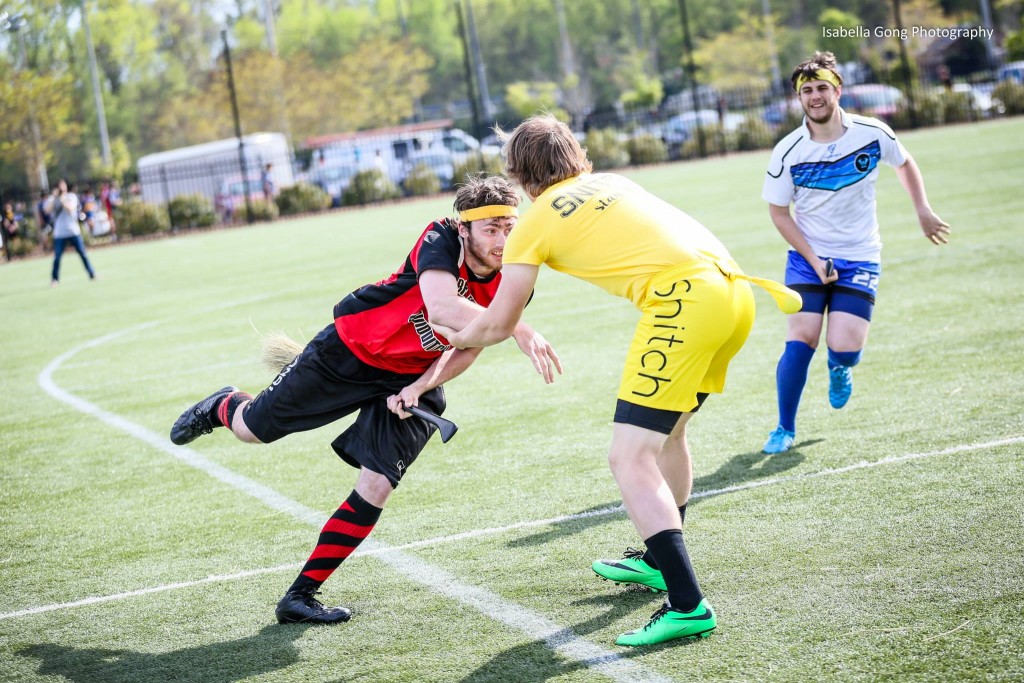
Credit: Isabella Gong
It’s hard to believe that a team with a core built from a team that sat in the Top 20 all season would end up at the bottom of our rankings, but that speaks to the strength of the teams to come on this list. While other teams are filled with stars, this is pretty close to being a college squad.
The biggest benefit their Ball State-heavy roster affords them is a lot of familiarity. While other teams will spend much of the next month coming together and building a coherent play style, the Intensity already have it. They will also have the option to revert to fall semester Ball State, a team that knocked off Ohio State, Bowling Green State University and University of Michigan by draining the tempo out of the game, long before Texas State University even considered doing so. While it’s not the most attractive quidditch, it’s a great tactic for an underdog to have up its sleeve.
Indianapolis isn’t going to wow anyone with elite individual efforts or Sportscenter-quality plays, but they have just the right amount of roster coherence and strategic acuity to be a headache for some of their divisional opponents. For the league’s biggest long-shot, there are far worse things to be.
- Ottawa Black Bears
This team is almost definitely stronger than the Canadian champions, and arguably stronger than last summer’s Team Canada. And, as the first team east of the Mississippi to travel south of the border for competitive quidditch in over a year, the Black Bears have a lot to prove and the roster to do it.
With the potential exception of Hugh Podmore, Ottawa got just about everything it could have wanted. The quaffle-player depth runs deep – featuring seven national team members – while the beater lines will be highlighted by Colin Wallace and Mathew McVeigh. And the leadership group has the attitude and competence to hold it all together. Add in the chance to prove themselves to the greater quidditch world, and you’ve got a team that’s going to come into every game hungry.
So where can this team get an edge? Simply put, they’re going to need to be a lockdown on the defensive side. From film of this past season, it’s clear that the Canadian game has continued to fail to develop offensively. Almost all successful offense is a drive, and the number of people still catching one-handed is off-putting. But this roster has depth of size and physicality in the chaser game, and if they play smart defensively, scoring could be extremely difficult for the opposition. It’s going to take a true commitment from every player on the team to execute, but if the Black Bears can pull out a high-pressing man defense that dares the opposition to beat them through the middle of the defense, they could keep teams off the board long enough to give their talented arsenal of seekers a chance in the snitch game.
Unfortunately for the Black Bears, the team finds itself in the loaded Eastern Division, where taking even a single win this season could prove a tall order. But fans should have July 25 circled on their calendars, as the Washington Admirals travel to Ottawa in a battle of the nation capitals. The Admiral’s beating game is unlikely to run the Black Bears off the pitch in the way Boston and New York could threaten too, and if Kyle Bullins has an off day, they could be ripe for upset. But even if an 0-9 regular season is in the cards for Ottawa, expect them to win a consolation game or two at the MLQ Championship and leave Americans once again thinking about Canadian quidditch in a positive way.
- Detroit Innovators
It’s going to be easy to think about the Innovators in terms of what could have been.
When I first had locked down the location of this team, I had visions in my mind of Blue Mountain’s Chris Barnard and Michigan’s Andrew Axtell – the best two quaffle players in the state, and arguably the region, this past USQ season – tearing through opposing defenses, with Ashley Calhoun at their back, on their way to making Detroit a clear top-four team, if not a title contender. But with Axtell off to greener – and, more importantly, snow-free – pastures in California, and Barnard taking time to focus on his new baby, there are a lot more holes in this squad than expected.
That said, there’s still reason to believe that Detroit could be a dangerous matchup for teams all season. And it starts, of course, with Calhoun. The Team USA beater isn’t just the best female beater in the region, but in the whole league, and it’s not particularly close. She’s got a perfect combination of agility, smarts and a cannon for an arm, and how far the team can push the advantage she gives them over the rest of the league at the position will have a major effect on how successful they can be.
The team also recently fell into a nearly ideal complement to Calhoun’s play in Tad Walters. While Calhoun is going to anchor the team defensively with technically-sound play and a heavy dose of aggression, Walters is going to cause havoc. The kinds of plays he’s capable of, whether it’s creating a transition opportunity with an aggressive beat in the defensive end or limiting the opponent’s defensive beating in a 1.5 bludgers opportunity, will allow him to almost serve as an extra quaffle player for the team, secure in the knowledge that Calhoun will have his back.
In the quaffle game, the Innovators may not have Axtell, but they do have much of the rest of the core of Michigan that has helped to make the team a legitimate threat in each of the past two World Cups, led by Eric Wasser and Matt Oppenlander. The squad also has a solid dose of Blue Mountain talent, including Kristina Packard, and a large contingent of a young Michigan State team to mold throughout the summer. It’s hard to pick out a star in this quaffle game, but there is a lot of potential if things click.
Detroit was one of the most difficult teams to rank for me. They aren’t a cadre of all-stars, like New York, or the clear conglomeration of two or three top school teams, like Cleveland, but the potential is very much there. And with the Northern Division seemingly wide open, the ceiling remains high.
- Washington Admirals
Most of the MLQ teams are conglomerations of groups of players from local teams. Rochester is made up of mainly the University of Rochester and RIT, while Cleveland is made up of mainly Ohio State and Bowling Green. Because of this, we have a good idea of how these teams will play and how the players will interact with each other on the pitch.
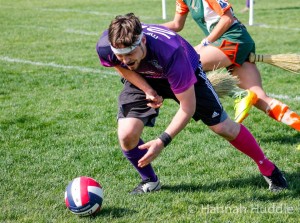
Credit: Hannah Huddle
But the Admirals are a completely different story. Made up mainly of top players from lesser teams, with a small core from the University of North Carolina at Chapel Hill, it is far more difficult to pin down this team’s style and how effective they will be together. There’s no better example for this than VCU’s Darren Creary. Listed at 6-foot-5, the ex-Division I basketball player is one of the biggest, most athletic players in the sport. Alley-oop passes to him behind the hoops can often be unstoppable by anything other than an immediate bludger. But his talents and development have been wasted for years on a middling Mid-Atlantic squad that first tried to make him a ball handler and then lacked the proper passer to get him the ball near the hoops. But on a team like Washington, with Max Miceli running the show on offense and James Hicks working on his development, it’s a whole new story for Creary. The same can be said for Steve Minnich, who was forced to do way too much for Capital Madness this past season, and Kyle Stolcenberg, who was always a strong contributor for the University of Virginia.
Of course, what this team really comes down to is properly gauging the talent level of the Tar Heels it’s based around. How much you believe in UNC’s Elite Eight run at World Cup 8 truly determines how much you think this team can accomplish. Miceli will be the squad’s primary ball handler, but will likely be thrown against far better defenses than he saw from the numerous Midwest teams UNC went up against in Rock Hill. Bullins will need to be just as effective as he was this past spring, as he and University of Maryland’s Ricky Nelson will have to hold together one of the more patchwork beater lines amongst the league’s top teams. And Andrew McGregor, Chris Champitto and Lee Hodge will need to continue to improve in the half-court offense, taking some of the load off of Miceli’s back.
Even if everything above does click, it’s still hard to argue that the Admirals will be at anywhere near the same level of talent as their Boston and New York rivals. Instead, they’re going to need to rely on strong strategies to keep them in those games. With players hailing from a number of different regular-season systems – UNC’s run-and-gun, Madness’s slow ball, Virginia’s stout defense – and a coach and captain in Hicks and Beto Natera that both carry a ton of experience and quidditch smarts with them, Washington will be capable of changing how they play on the fly and, ideally, dictating the pace and style of the games they will play in. It still may not be enough, but it could make things far more interesting in the East.
Washington is one of the biggest question marks in the league, but they also define one of the most exciting parts of MLQ: watching top players from numerous different come together to play one coherent style. The floor for the Admirals may be concerningly low – a floor that would be quite a bit higher if they could just have maintained Maryland’s Erin Mallory and Matt Angelico – but the ceiling should be more than enough to make them a potential top-four team.
- Rochester Whiteout
It’s hard to hide my excitement about this team. I love the way Devin Sandon, Shane Hurlbert and Jon Jackson all play the game, and it’s a special treat to see them on the pitch together. Then you consider the fact that a team built very much like this, one without Jackson or an injured Sandon, made a run to the World Cup Sweet 16, and it’s easy to see that there’s a lot of potential brewing in upstate New York.
This team is built to be a defensive wall. University of Rochester brought a physical team to Rock Hill in April, and the RIT players that will join the Whiteout come from a program with a long history of being one of the Northeast’s most bruising. Jackson, meanwhile, is one of the best defensive keepers I’ve ever seen in pointblank situations near the hoops, with no better example than his three stuffs of David Fox in a game earlier this season. No point is going to be free against this team: the exact formula that made Rochester such a threat at World Cup.
Unfortunately for Whiteout fans, Sandon’s slow injury rehab remains an ominous cloud over the team’s chances. As the smallest city in the league, Rochester also boasts one of its smallest rosters, and needs to get heavy contributions from its stars, game after game. The longer Sandon remains on the sidelines, which will likely at least be the case during the team’s season opener against Intensity, the longer the squad’s chances get.
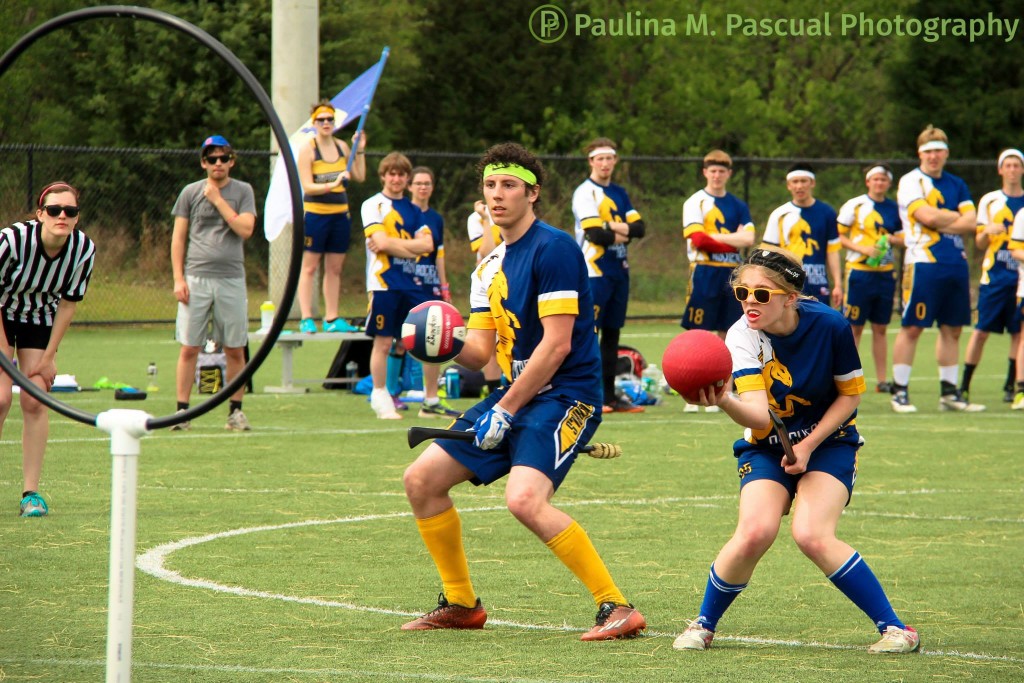
Credit: Paulina M. Pascual
As good as their chasing game is bound to be, the question that will define this team, as it seemingly always has in the city, is what the Whiteout can get out of its beating game. For as much credit as Rochester chasers have gotten, perhaps the most important factor in that team’s run Regionals run was the breakout performance of beater Alex Venuti. Venuti improved through each and every tournament he played in the fall, but the MLQ slate provides a new challenge of highly-skilled and deep beater rotations. If Venuti can rise to the occasion, the team could be a true contender come August. If not, this Rochester team will be plagued by the same beater issues that have tormented both Rochester school teams for years, even if Josh Kramer can return to 2013-14 season form.
For one of the league’s shortest rosters, there’s no lack of talent at the top of the depth chart. But how they manage their depth, and what they can get out of the beater game, will go a long way in deciding whether this team slips into the bottom half of the league, or gives the top teams a run for their money.
- Cleveland Riff
Anyone who doesn’t believe Cleveland to be a top-three team in this league is putting way too much weight on a single tournament. Ohio State and Bowling Green have been the best programs in the Midwest for years, and this team gets its pick of both, along with a few other useful contributors in Blue Mountain’s Luke Changet and Miami University’s Matthew Dwyer and Stephanie Raudenbush. Put too much value on a World Cup played after a terrible, play-halting winter, and you risk missing the fact that this team has depth and talent that the other three Northern Division sides can only dream of.
This team’s strength starts in the beating game, where premade chemistry should make for some of the most cohesive beating pairs in the league from the start. Matt Eveland will likely pair of with his beater partner of many years, Julie Fritz, while any of the three Bowling Green male beaters on the squad can work with Kaitlin Richard. With Eveland, Changet, Chad Brown, Max McAdoo and Max Portillo, the Riff boast a cadre of athletic beaters that consistently sit at the top of the rankings for the position in the Midwest.
Even if this beating game might not be able to dominate every game in the way some in the league can, no one’s going to be hoarding control against Cleveland, and that may very well be enough with talent the team can put on the pitch in the quaffle game. The Riff can start the most dangerous one-two combination in the Midwest in David Hoops and Jeremy Boettner, along with perhaps Dwyer and Kelsey Franklin, and then simply sub into an all-Bowling Green line of Daniel Daugherty, Mike Gallagher, Kendall Kuhn and Meredith Taylor that would start on any other team in the division.
If there’s a vital flaw in this team, it’s where they go for a ball handler after Hoops. Bowling Green’s offense was often stunted in big games, with Daugherty trying to do too much by himself, and while Gallagher has come along well in the role, ball handling in the MLQ Championship is a massive responsibility for a first-year player. Settling on a second primary ball carrier will be one of the first and most important things the Riff need to do this season.
This team might not be equipped to do any one thing great, but it is perhaps the most well-rounded in the league, from its beating, to its chasing, all the way to Team USA seeker Sam Roitblat. Cleveland has the power to put lesser teams out of games; the talent to stay in games with the top teams; and the seeking and seeker beating to win those close games, leaving a finals appearance very much in the equation for the North’s best.
- Boston Night Riders
Finally, we get to the two main title contenders. It should come as a surprise to no one that Boston’s MLQ team is built to execute a two-male beater set at an extremely high level. While a look into the team’s male-quaffle and female-beater depth doesn’t encourage thoughts of a championship squad, what this team can do in female-quaffle and male-beater play more than makes up for it. Frankly, it’d be shocking to not see them in a two-male beater set for the majority of competitive games.
The Night Riders run six deep at female chaser, highlighted by Team USA’s Hannah DeBaets. Behind her is a veritable squadron of players with a variety of elite talents, from Emily Hickmott’s defense to Carli Haggerty’s offense. Boston will be able to mix and match the six as they see fit, molding the perfect combination for any situation.
Of course, to get the most out of the team’s deepest position, the Night Riders need to excel at male beater, and they are well-equipped to do that as well. Not only are Max Havlin, Aaron Wohl and Andrew Miller are incredibly high-level beaters, but all three are experienced in two-male beater sets. Havlin is the clear star, and has the athleticism and stamina to put in major minutes as the top man in a front-back set. Wohl is well-equipped to spell him as he works himself back up to the speed of the modern game, having played many minutes up top in the Emerson zone that carried his alma mater all the way to the Final Four. And Miller will be happy to sit as the back beater, running the defense, keeping Havlin and Wohl in position, letting them be the physical force offensively, and conserving energy to play as many minutes as necessary, as he did in the Northeast Regional semifinals and finals, during which he played almost every minute. Boston’s leadership was truly lucky to stumble into a series of male beaters that complement each other so well.
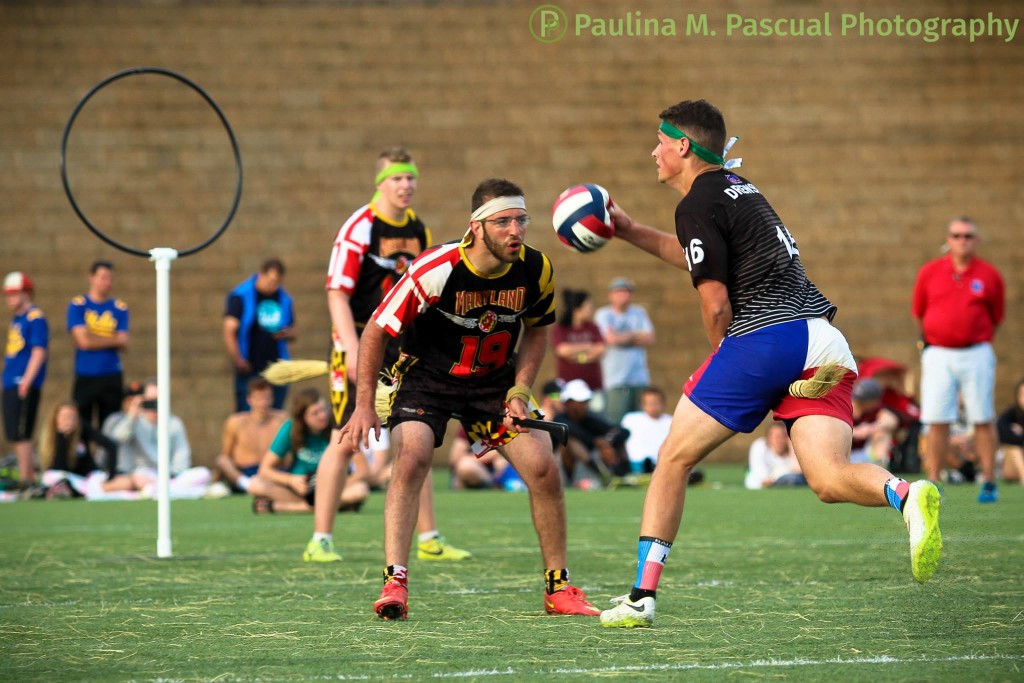
Credit: Paulina M. Pascual
Of course, everything about this team’s success will revolve around captain Harry Greenhouse, who is the Night Riders’ best ball handler, point defender and seeker. Jayke Archibald will also handle some of the ball handling duties as well, but is more of a passer than a shooter. Tyler Trudeau likely offers the next most ability on the squad with the ball in his hands, but will need to prove his chops outside of the Emerson offense he is so comfortable in. A number of players can step up as point defenders, including Max Blaushild and Sheldon Bostic, and a few can spell Greenhouse at seeker, including Greg Bento and Trudeau, but he’s the best on the team in both fields. How he manages his own minutes – as well as the playing patterns of his substitutes – will go a long way in determining this team’s success.
For such a talented squad, this team does not have the depth of its main competition, and is must more subject to one or two backbreaking injuries. The loss of any of their three male beaters would be catastrophic, but any time missed for their primary ball handlers could be just as costly, with few people to turn to behind them.
Boston has the ability to mix things up strategically, and that, along with their top-end talent, should allow them to give any other team in the league a run for their money. But the tenuousness of their depth charts – a potentially heavy reliance on a small group of players – makes them difficult to pick to win it all this early on. Even so, anything less than a finals run will likely be seen as a disappointment.
- New York Titans
I know, I know. It’s not exactly controversial to pick the team captained by the man that hasn’t lost a World Cup match in three years to win MLQ. But this pick comes from more than Augustine Monroe. He’s most likely the most talented player in the league, and almost definitely the best player developer, but it takes a team to win a title, and Monroe and coach Michael Parada surely have one.
The Titans finally give New York City the opportunity to mix the beater strength of New York University with the quaffle depth of The Warriors. Kyle Jeon and Dylan Meehan will anchor the beater corps, allowing the immensely talented Mario Nasta of RPI a chance to get acclimated with playing on a top team. The return of Freddy Varone after a season off furthers their beater depth, though his most important contributions will likely come in the seeker game, where he’ll split time with Andrew Zagelbaum.
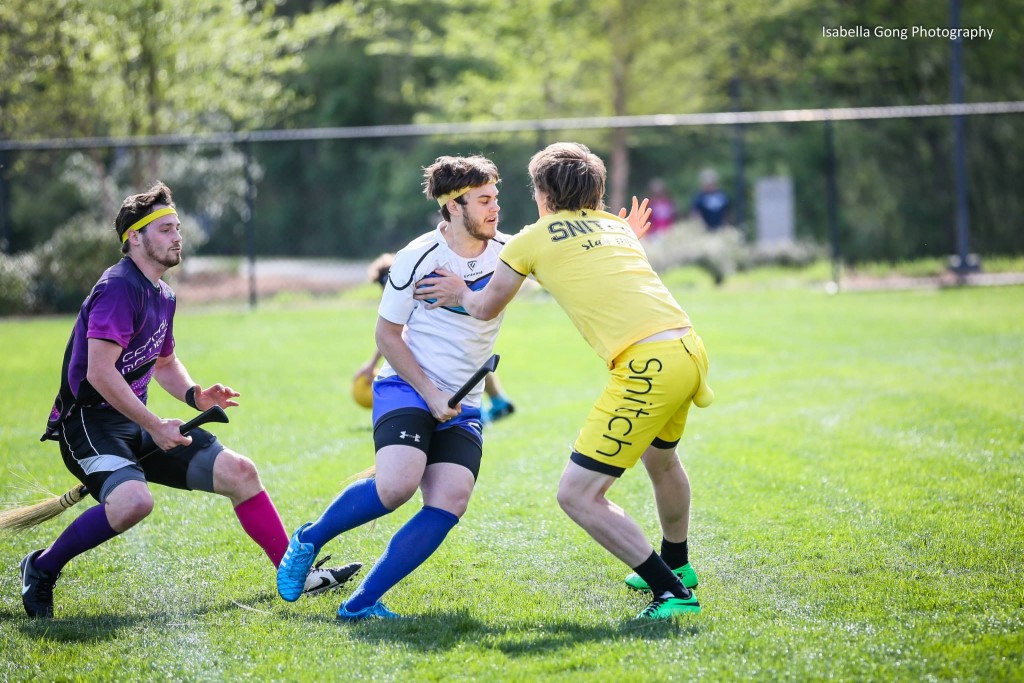
Credit: Isabella Gong
In the quaffle game, New York can send a seemingly endless number of looks at their opponents. Monroe and Alex Linde can run drive-and-dish offenses with the best of them, knowing they have talented wingers like Tim Keaney and Parada making the cuts they need. Jaime Colon can pound his way through an opposing defense, while Kyle Carey can slip through them. They can go tall with Mo Haggag and Brandon McKenzie or bruising with Taylor Crawford and Colon. The only real question, other than which look they want to give in any given situation, is whether they can develop a female chaser or two to play at the level this offense will demand.
Outside of Monroe, the team’s other major edition from outside of the New York area is Leeanne Dillman. In Dillman, a New York team has an elite female beater for the first time since Heather Knoch roamed the pitch years ago. Dillman is not only an extremely talented beater, but also the Titans’ Boston rivals worst nightmare, capable of completely neutralizing the advantage of two-male beater sets – something she had to do on a weekly basis in Boston this season – while bringing an elite level of seeker beating that should give New York an edge in SWIM situations. Dillman was not one of the flashiest names to pop off an MLQ roster when they were announced, but when New York takes the pitch in the finals in August, no one may be more important.
It’s difficult to find the chink in this team’s armor, and while it makes them the clear favorite, it also makes them difficult to write about. They have depth at every position on the pitch, they have strong coaching, and both a coach and a captain that pride themselves on having their teams in top physical shape. If I were to nitpick, it would be at female chaser, but I wouldn’t be surprised if even that fixed itself by August with the recent development of Rutgers’ Lindsay Marella and the veteran presence of Missy Hanley.
As much as I want to see this as a two-horse race, I truly think Boston might be closer to the rest of the pack than New York. With recruits from almost every US region as well as Europe, the Titans got just about every piece they could have wanted. It’s their trophy to lose, but everyone will be giving New York its best shot. It will be up to the team to temper expectations, take things one game at a time and not let anything get to them. If they do, the inaugural MLQ title should be in their grasp.
About Ethan Sturm
Ethan is the co-founder and former managerial editor and chief correspondent of The Eighth Man. When not talking quidditch, which is rare, he can be found drilling people's teeth and spending time with his elusive wife. He's also the worst.

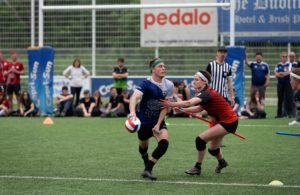

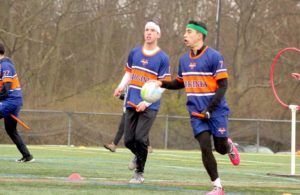
One Comment